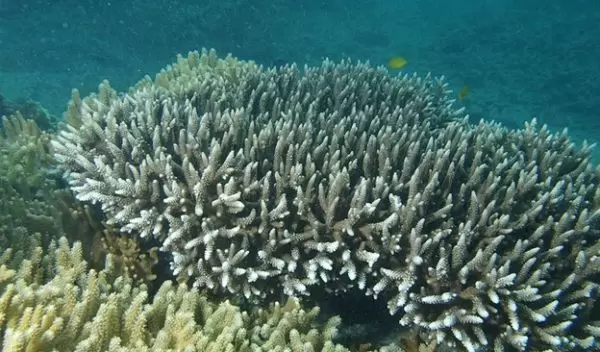
Advanced imaging reveals new details of coral-algae relationship
Researchers at the Scripps Institution of Oceanography have discovered a novel molecular process that corals use to control the subcellular environment of the algae that live inside them.
A specialized protein controls the fluctuating day-to-night transfer of nitrogen and carbon dioxide through the corals' cellular membranes to the algae. The process is important because the coral and algae live in a mutually beneficial relationship called symbiosis. Although the team expected to find the protein, they could not have predicted the day-night changes in the intracellular areas they observed.
"We show that the interface between the animal hosts and the plants that live inside them is a dynamically controlled microenvironment," said Angus Thies of Scripps Oceanography. Thies and Scripps marine physiologist Martín Tresguerres and co-authors describe the first direct observations of this cellular interface in Science Advances. The study was supported by the U.S. National Science Foundation.
"Detailed studies like these are important to our understanding of organisms' responses to environmental conditions," said Irwin Forseth, a program director in NSF's Division of Integrative Organismal Systems. "These insights allow for greater understanding, prediction and potential mitigation of the detrimental effects of a changing planet on living systems."
The team imaged the coral membrane that surrounds the algae at a resolution more than double that of the lab's previous microscope. The new system can isolate features that are only 120 nanometers apart. A human hair, by comparison, is 90,000 nanometers thick.
"Decades of studies show that corals seem to regulate how much nitrogen they give to their algae," Tresguerres said. But if the algae receive too much nitrogen, they may grow and multiply too quickly, disrupting the symbiosis.
"Just like humans, coral health and disease can be tracked to the cellular level," said Tresguerres. "When things go right on the cellular level, the coral thrives. When things go wrong, it usually leads to malfunction or disease, potentially including 'bleaching.' What we call the symbiosis interface might be the most important interface, the most important membrane, on the entire reef."
Symbioses form important biological interactions in many living systems. For example, humans have a symbiotic relationship with the bacteria that fill our digestive tracts. But there's a difference.
"In humans, bacteria live outside our cells," Thies said, "such as in the inside of our intestines and on our skin. But in corals, these algae live inside the cells of the host animal itself. It's a very tight space. It's like having a roommate forever and hoping it's a really good roommate. You want to keep everyone as happy as possible."
